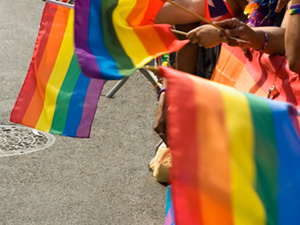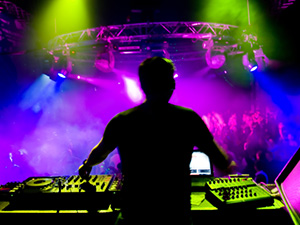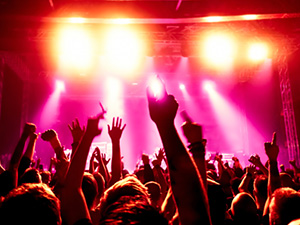Language: Spanish – officially Castilian, but the dialect is it's own.
Currency: Chilean Peso
Time zone: GMT -4 hours
International phone code: 56
Capital: Santiago
Climate: Take your pick! The country is more than 4,200 km long from its arid northern border with Peru to its frozen southern tip just across the Drake Passage from Antarctica. The lunar Atacama Desert in the north is recognized as the oldest and driest desert on the planet, with some weather stations recording no rainfall. Ever.
Central Chile, including Santiago and Valparaiso, can be considered Mediterranean in climate, with summer highs reaching into the 30ºCs in January, and winter lows dipping to 4 or 5ºC in June and July. Although a seaside city, the beaches around Valparaiso can be surprisingly cold due to the Humbolt Current, which flows straight up the coast from Antarctica. For the uninitiated, enjoyable swimming can be limited to a narrow summer window in late December and early January.
Further south, the maritime regions surrounding Valdivia and Puerto Montt are cooler and wetter, receiving an annual average of 400mm of precipitation.
The weather in the Zona Austal — the spectacularly rugged southern-most region — is tempered by its proximity to the South Pacific Ocean. Summer temperatures range between 7-14ºC, while winters hover just above freezing.
Transportation: Most major airlines offer flights in and out of Santiago's Arturo Benitez International Airport (SCL). The national carrier, LAN, offers reliable service to all major points north and south of the capital.
But consider taking the bus. If you stick with the major companies (Tur-Bus and Pullman), covering the long distances between cities can be comfortable and cheap aboard their double-decker air-conditioned coaches. Two, sometimes three, different classes are offered, the prices reflecting the comfort of your seat and the depth of the recline. First class feels like travelling in a La-Z-Boy, and the price often includes a small boxed lunch. The cheaper seats, on the upper level, may not be quite as capacious, but they offer unrivalled views of the countryside, especially if you book early and get the seats at the very front, where your view is even better than the driver’s. Be sure to bring earplugs and/or headphones — movies are usually played for the duration of the trip, and usually played very loudly.
Canadian passport holders pay a reciprocity fee of US$132 upon entering the country, and your tourist visa is good for three months. To stay longer, you can tunnel your way through the Kafka-esque process of paying for a 30-day extension, or leave the country overnight. From Santiago, the most popular route for re-entry is the Mendoza Run — a harrowing bus ride through the Andes and into Argentina along one of the world’s highest highways. Be sure to get a front row seat for this trip. And again, stick with the major bus operators.
Gay Chile:
Chileans have experienced seismic political, social, and legal shifts in the recent past.
Anyone under the age of 25 is considered part of the Modernos — the generation that grew up after the bloody Pinochet dictatorship (1973-90). With sudden access to a previously prohibited world of social media and mass communication, they have exploded on the scene with outspoken demands for social justice and equal rights.
They also have an overwhelming love for the music and fashion of the '80s — an era of mainstream popular culture that Chile never experienced.
The result is a country halfway there. Same-sex activity is legal (over the age of 18) but marriage is not an option and partnerships are not legally recognized. Anti-discrimination laws have been recently enacted — you can even serve in the military — but adoption and immigration rights are still unavailable.
Older generations are still quite conservative, though, making Chile feel like the least Latin of the Latin American countries. The physical and emotional scars of the Pinochet dictatorship are very much in evidence. Compounded by the oppressive influence of the Catholic Church (an institution that, for the most part, supported the dictatorship), there can be a dour undercurrent of mistrust and a lingering paranoia.
But don't let this mislead you — make a Chilean friend and you will discover what loyalty and family can really mean.
The LGBT scene is limited to the larger urban centres. Santiago's gayest neighbourhoods are Barrio Bellavista; the charmingly old-world Lastarria; and a short block of cafés along JM de la Barra (sometimes unnervingly referred to as el Castrito — the little Castro) in Barrio Bellas Artes.
But even in these neighbourhoods, hand-holding and other displays of affection are not recommended. This is made especially maddening because young (and even not-so-young) Santiaguino couples are entangled in each other's arms and lips everywhere you look!
Also, the further northeast you travel from Santiago Centro, the more 'Paris' and 'New York' the landscape becomes. Las Condes and Vitacura (nicknamed Sanhattan) are wealthy, lighter-skinned, and conservative. While appearing more tolerant, the residents are staunch supporters of the status quo.
Other major cities — Arica, Iquique, and Antofagasta in the north; La Serena, Valparaiso, and Viña del Mar in central Chile; Concepcion and Valdivia further south — all have gay and/or gay-friendly scenes, though limited and discreet.
And in Punta Arenas on the Strait of Magellan, the club Deliriuz can claim the honour of being the world’s southern-most gay discotheque.




S(dhca3l2fdex2ag55qlbdaff2))/content/user/images/Dest/128/22260-140-115.png)
S(dhca3l2fdex2ag55qlbdaff2))/content/user/images/Dest/38/5043-140-115.png)
S(dhca3l2fdex2ag55qlbdaff2))/content/user/images/Dest/63/15340-140-115.png)
S(dhca3l2fdex2ag55qlbdaff2))/content/user/images/Dest/292/21566-140-115.png)
S(dhca3l2fdex2ag55qlbdaff2))/content/user/images/Dest/212/44228-140-115.png) Santiago
Santiago